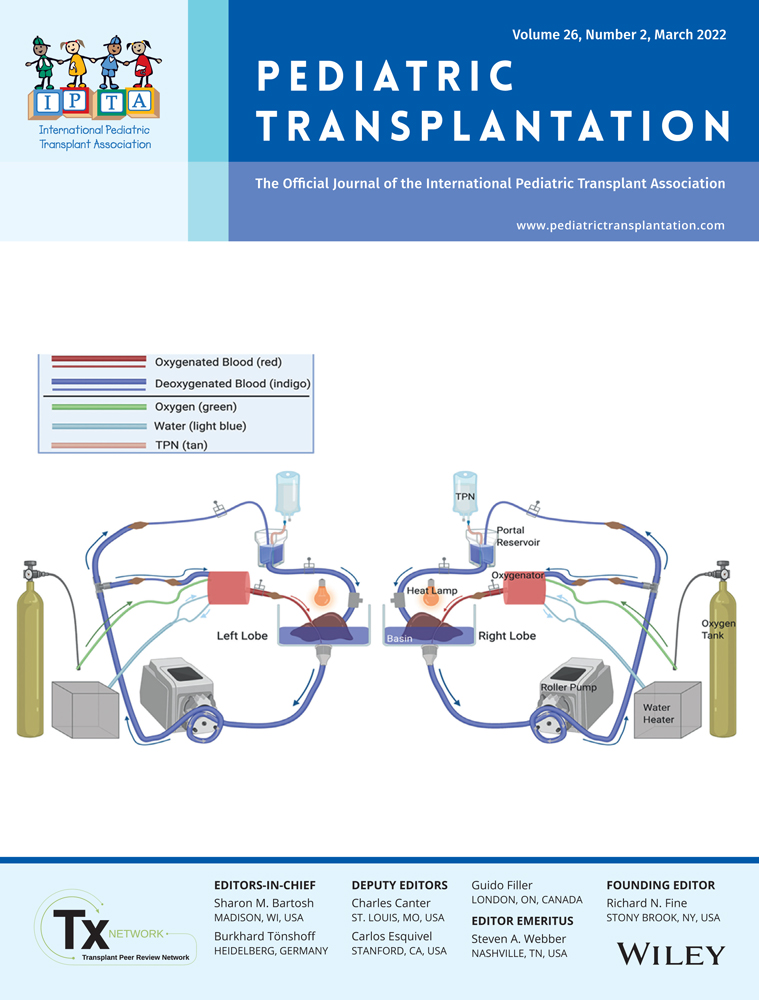Changes in blood glucose level after renal transplantation in pediatrics: A study of risk factors of new-onset diabetes after transplantation
Abstract
Background
New-onset diabetes after transplantation refers to the development of diabetes after solid organ transplantation without a history of diabetes and is related to poor graft function and lower survival rate. In the kidney transplant population, NODAT occurs in 24% of adults and 9% of children. The real incidence and risk factors in the pediatric population is unknown, which we aimed to determine in this study.
Methods
A retrospective study was conducted in patients who underwent kidney transplantation in the Pediatric Nephrology Service of the “Federico Gómez” Children's Hospital of Mexico.
Results
The study included 127 children divided into groups 1 and 2 (without [n = 110 patients, 86.5%] and with NODAT [n = 17 patients, 13.4%], respectively), with median ages of 14 years (interquartile range [IQR], 9–16 years) and 15 years (IQR, 13–16 years; p = .3), respectively. Cox proportional hazards analysis revealed an association between changes from baseline to 24-h postoperative blood glucose level as a risk factor of the development of NODAT. This implies that each unit increase in blood glucose level in the first hours after transplantation also increases the risk of developing diabetes (95% confidence interval, 1.011–1.021; p = <.001).
Conclusions
Post-kidney transplant patients require immediate follow-up, and attention should be paid to changes in blood glucose level in the first 24 h after transplantation, as any alteration may be an early sign of development of NODAT, especially in patients with a family history of diabetes mellitus.
CONFLICT OF INTEREST
The authors declare that the research was conducted in the absence of any commercial or financial relationships that could be construed as a potential conflict of interest.
Open Research
DATA AVAILABILITY STATEMENT
The datasets for this study are available by contacting the corresponding author.




